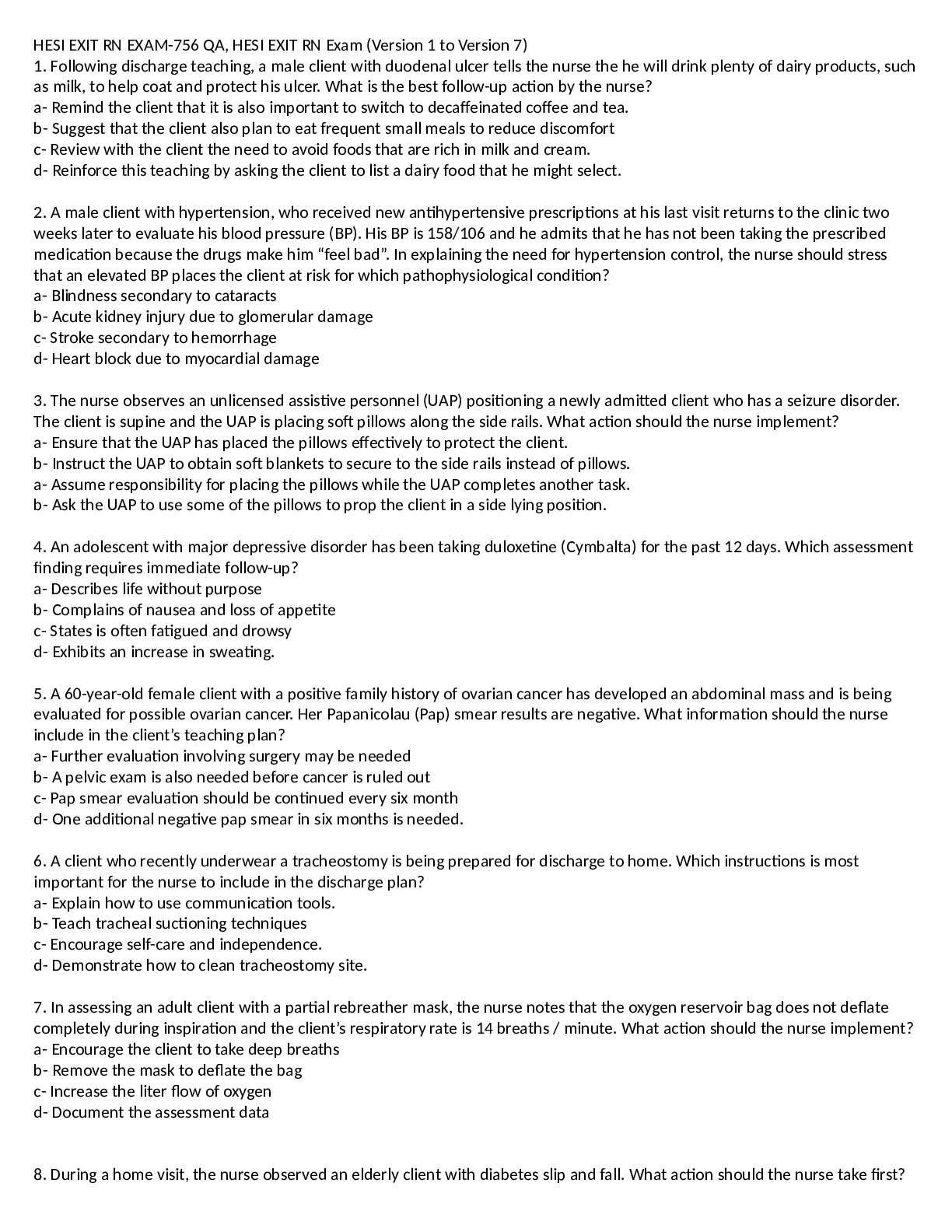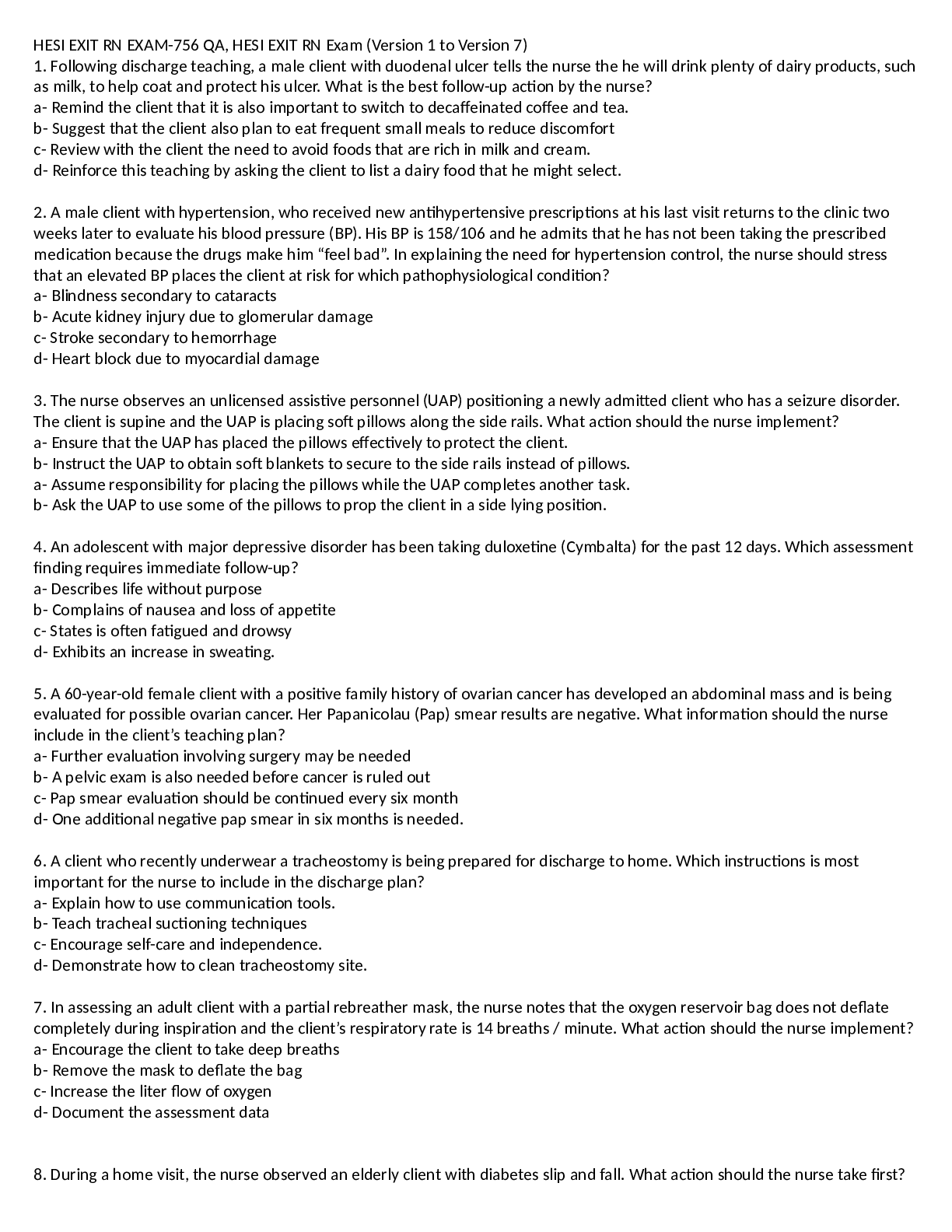HESI EXIT RN EXAM-756 QA, HESI EXIT RN Exam (Version 1 to Version 7)
Course
Project Management
Subject
Chemistry
Category
Questions and Answers
Pages
173
Uploaded By
ATIPROS
Preview 5 out of 173 Pages


Download all 173 pages for $ 8.00
Reviews (0)
$8.00
